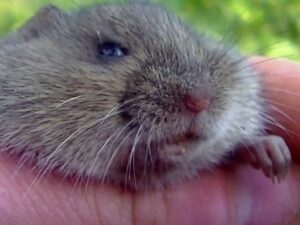How to Trap Voles
Few things are more frustrating than putting hours of work under the hot sun into your yard only to find it ruined by rodents the very next day. Critters like rabbits, mice, and voles have plagued our carefully cared-for lawns as long as we as humans have been working to keep our property clean and organized, and they show no sign of stopping. Dealing with creatures such as voles can appear on the surface to be a large and frustrating task, but, with the right know-how and a couple easy to get pieces of equipment, you can take control of your yard once more. Here are a few tips and tricks on how to trap voles and keep them away from your property once and for all. From live traps to homemade repellents, we will go over everything you need to save your yard from the threat of voles this summer.


When you are selecting a trap for your vole issue, look for live vole traps with small openings. Even if you think that you only have a couple of critters running around on your property, you want to make sure you have several traps out so that you can quickly and easily control a growing vole population. For a smaller garden, start with a dozen traps, but if you are doing anything larger, you might need upwards of fifty individual vole traps.
When you are placing your vole traps, location is key. Voles are creatures of habit that follow the same trails and paths on a daily basis, so try to place your traps along these pathways if you can. If you can’t see any of these trails around your property, take a closer look at the weedier or long grass areas of your land. These are the areas where the voles will be hiding out, as they can find most of their diet of vegetables and grains in these spots. Place your traps along these paths with the trigger end pointed at or touching the runway if possible. You can bait your traps with things as simple as apple slices with peanut butter or oatmeal on them if you like, or you can simply leave your traps un-baited as voles will trigger some types of traps as they walk over them on the path. Voles will also be drawn to bread and butter, small nuts, cherry pits, and seeds, so all of these can be used to bait your traps as well. Make sure that you aren’t only putting bait inside the trap but around it as well so that voles that wander by will be drawn to the trap itself. Once your traps are placed, make sure you are checking on them daily, removing anything inside of them, and replacing reset traps until you are no longer catching voles regularly. When you think you’ve cleared out an area, move the trap to a new location roughly 20 feet away and start the process again. You can keep voles from returning to areas that you have cleared by destroying burrows or trails with a shovel.


In addition to trapping voles, there are a wide variety of things you can do to keep them away from your property. If you want to use a vole or other pest repellent, look for one that contains capsaicin, one of two active ingredients that have been proven to repel voles. For larger areas, use a liquid repellant to create a perimeter around the space you are trying to protect, and for smaller areas, look for a granular repellent for that barrier. The best repellents for voles will last you up to 30 days, so you shouldn’t need to reapply it too often. This kind of repellent targets the vole’s sense of smell and taste, which makes it easy to replicate somewhat with ingredients you have around your home. By mixing things like eggs, red pepper, garlic, water, and other strong-smelling ingredients and spraying the mix around your property, you can get a similar repellant, although this is often less effective and can also be time-consuming.
Getting rid of tall weeds, ground cover, and litter around the gardens, crops, and lawns on your property can also prevent voles from making their homes in your space.
Select Your Animal



Raccoons
Raccoon Removal Information & How-To Tips



Squirrel
Squirrel Removal Information & How-To Tips



Opossum
Opossum Removal Information & How-To Tips



Skunks
Skunks Removal Information & How-To Tips



Rats
Rat Removal Information & How-To Tips



Mouse
Mouse Removal Information & How-To Tips



Bat
Bat Removal Information & How-To Tips



Bird
Bird Removal Information & How-To Tips



Snake
Snake Removal Information & How-To Tips



Beaver
Beaver Removal Information & How-To Tips



Mole
Mole Removal Information & How-To Tips



Vole
Vole Removal Information & How-To Tips



Gopher
Gopher Removal Information & How-To Tips



Rabbit
Rabbit Removal Information & How-To Tips



Woodchuck
Woodchuck Removal Information & How-To Tips



Flying Squirrel
Flying Squirrel Removal Information & How-To Tips



Chipmunk
Chipmunk Removal Information & How-To Tips



Coyote
Coyote Removal Information & How-To Tips



Fox
Fox Removal Information & How-To Tips



Wild Hog
Wild Hog Removal Information & How-To Tips



Dead Animal
Dead Animal Removal Information & How-To Tips